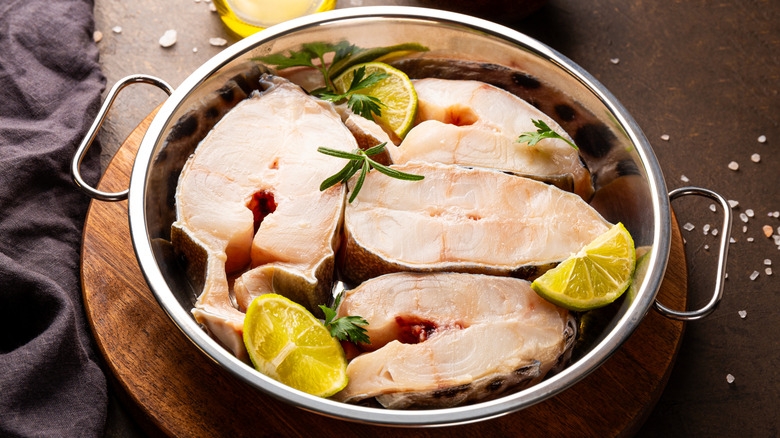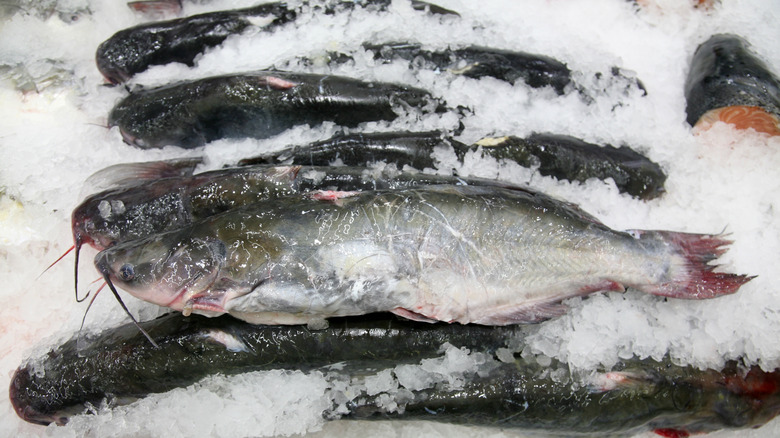Despite Being A Cheap Option, You Might Want To Skip This Type Of Fish
Those who love eating fish may think that the only things to worry about are what meal to make from it or the telltale signs that your fish has gone bad. It turns out, though, that some fish are absolutely not worth buying in the first place. Chief among these are catfish, and in particular, the channel and pangasius catfish from China and Vietnam, which are harmful due to dangerous farming practices. The farms where these fish are raised have been known to cause immense harm to local environments because of the large amounts of waste they produce and leak out into waterways; additionally, any catfish that escape the farm may spread diseases to other fish life in the area.
The United States Food and Drug Administration (FDA) has banned channel catfish from China altogether, not only because of the environmental damage caused by the farms, but also because of the amount of chemicals and unauthorized antibiotics used in catfish farming there. Despite the ban, the U.S. Department of Agriculture's Food Safety Inspection Service (FSIS) had to issue a health warning in 2024 because of illegal importing of catfish from China. The fish was deemed unfit for human consumption, and consumers who purchased the fish were asked to dispose of it in a safe and responsible manner.
How to know whether the catfish you're buying is safe
Catfish is one of the most heavily consumed fish in the United States, so knowing where to locate some that's sustainable is important. Catfish farmed in the U.S. has a low impact on the local ecosystem and is generally considered to be the most environmentally sustainable option. Pangasius — or sutchi — catfish that are certified by the Aquaculture Stewardship Council (ASC), Global Seafood Alliance Best Aquaculture Practices (BAP), or Naturland meet that criteria, while blue catfish farmed in Chesapeake Bay are another sustainable catfish option.
When shopping for your next catfish meal, it pays to know where it came from. This may be difficult or not possible in all situations, like trying to decipher which fast food chains have the highest and lowest quality fish sandwiches; some stores may also not know where the fish is from (which should be a red flag, anyway). The best course of action is heading to a reputable store or fish market where you'll know what you're getting and where it came from. Don't give up on catfish, but also shop sustainably.

